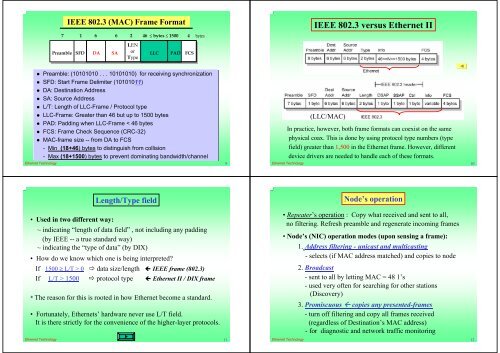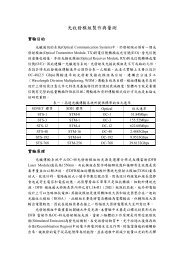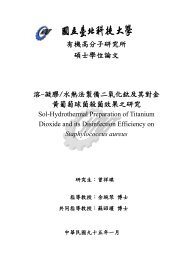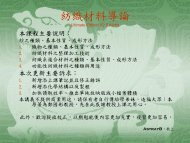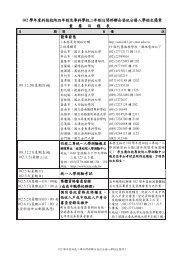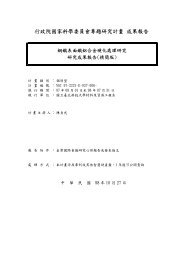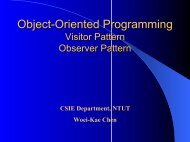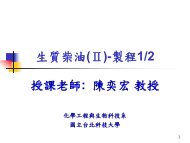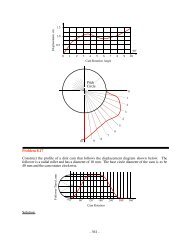Ethernet Technology
Ethernet Technology
Ethernet Technology
Create successful ePaper yourself
Turn your PDF publications into a flip-book with our unique Google optimized e-Paper software.
IEEE 802.3 (MAC) Frame Format<br />
7 1 6 6 2 46 bytes 1500 4 <br />
LEN<br />
Preamble SFD DA SA or<br />
Type<br />
LLC PAD FCS<br />
IEEE 802.3 versus <strong>Ethernet</strong> II<br />
Preamble: (10101010 . . . 10101010) for receiving synchronization<br />
SFD: Start Frame Delimiter (10101011)<br />
DA: Destination Address<br />
SA: Source Address<br />
L/T: Length of LLC-Frame / Protocol type<br />
LLC-Frame: Greater than 46 but up to 1500 bytes<br />
PAD: Padding when LLC-Frame < 46 bytes<br />
FCS: Frame Check Sequence (CRC-32)<br />
MAC-frame size -- from DA to FCS<br />
- Min (18+46) bytes to distinguish from collision<br />
- Max (18+1500) bytes to prevent dominating bandwidth/channel<br />
<strong>Ethernet</strong> <strong>Technology</strong> 9<br />
(LLC/MAC)<br />
In practice, however, both frame formats can coexist on the same<br />
physical coax. This is done by using protocol type numbers (type<br />
field) greater than 1,500 in the <strong>Ethernet</strong> frame. However, different<br />
device drivers are needed to handle each of these formats.<br />
<strong>Ethernet</strong> <strong>Technology</strong> 10<br />
Length/Type field<br />
• Used in two different way:<br />
~ indicating “length of data field” , not including any padding<br />
(by IEEE -- a true standard way)<br />
~ indicating the “type of data” (by DIX)<br />
• How do we know which one is being interpreted?<br />
If 1500 L/T > 0 data size/length IEEE frame (802.3)<br />
If L/T > 1500 protocol type <strong>Ethernet</strong> II / DIX frame<br />
* The reason for this is rooted in how <strong>Ethernet</strong> become a standard.<br />
• Fortunately, <strong>Ethernet</strong>s’ hardware never use L/T field.<br />
It is there strictly for the convenience of the higher-layer protocols.<br />
<strong>Ethernet</strong> <strong>Technology</strong> 11<br />
Node’s operation<br />
• Repeater’s operation : Copy what received and sent to all,<br />
no filtering. Refresh preamble and regenerate incoming frames<br />
• Node’s (NIC) operation modes (upon sensing a frame):<br />
1. Address filtering - unicast and multicasting<br />
- selects (if MAC address matched) and copies to node<br />
2. Broadcast<br />
- sent to all by letting MAC = 48 1’s<br />
- used very often for searching for other stations<br />
(Discovery)<br />
3. Promiscuous copies any presented-frames<br />
- turn off filtering and copy all frames received<br />
(regardless of Destination’s MAC address)<br />
- for diagnostic and network traffic monitoring<br />
<strong>Ethernet</strong> <strong>Technology</strong> 12


